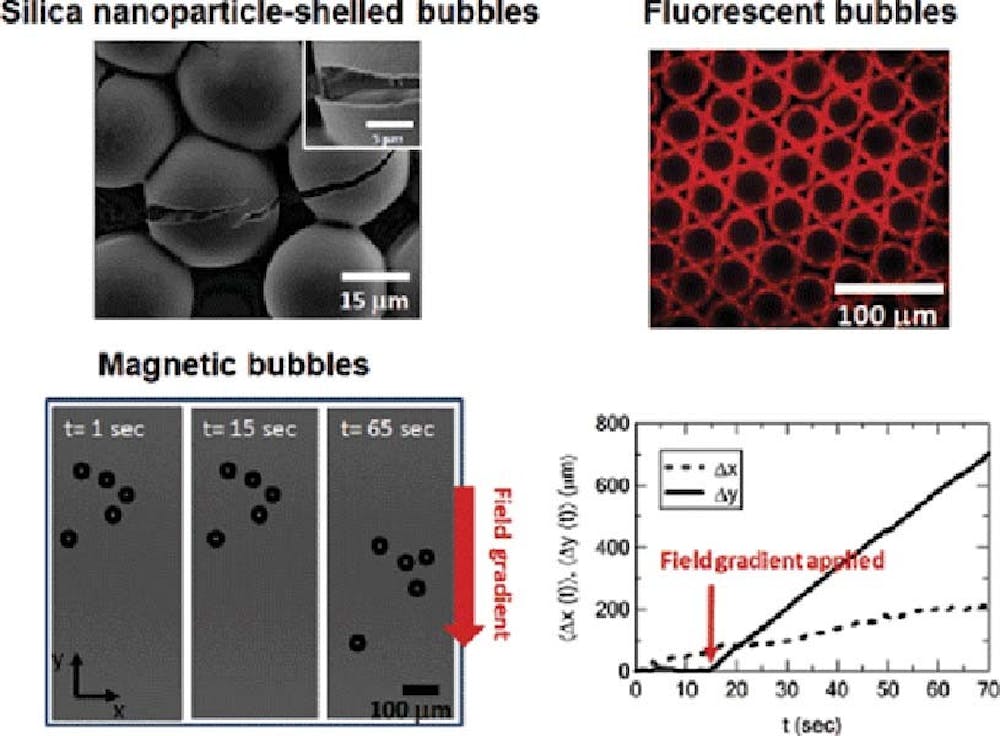You can’t burst this professor’s bubble.
Assistant professor of Chemical and Biomolecular Engineering Daeyeon Lee recently won the 3M Nontenured Faculty Award for creating particles that are hollow and lightweight, like bubbles, but are also surprisingly sturdy.
This combination of lightness and strength is what makes these tiny bubbles — only 50 microns thick, half the thickness of a strand of hair — remarkable.
“If you want to make most materials light … you end up sacrificing its physical properties, its strength, its durability,” Lee explained.
The identical particles can be used to create lightweight composites, or mixtures of particles and polymers. A super light and super durable composite will have many applications in industry.
“You want to build a car … you want to build an airplane, you want the materials as light as possible without sacrificing its structural integrity,” Lee said.
Lee compares the way he creates small bubbles of uniform size to a dripping faucet. Drops of water from a dripping faucet will be consistent in size because of the balance between the liquid’s surface tension force, which is holding the droplet to the faucet, and the force of gravity.
Lee has designed an apparatus that takes advantage of this balance of forces to create uniform bubbles of gas. It “drips” gas into liquid, creating gas bubbles that are all the same size.
Unlike soap bubbles, Lee’s particles have a thin hard shell made of polymers, which gives them strength. The particle is light because its center is hollow.
“People tend to think of bubbles as transient materials … but we’ve found a … method to make them really strong and stable,” Lee said.
The particles’ constant size also makes them unique.
“Currently, there are different groups working on making composites [that incorporate] bubbles to lower their density …. But the current bulk methods of bubble generation produce a very non-uniform sample, where the distribution of diameters and mechanical properties are very broad,” explained Teresa Brugarolas, a fourth-year doctoral student studying Chemical and Molecular Engineering. She has worked in Lee’s lab since January 2010.
Lee is currently exploring ways to use these composites.
The 3M Nontenured Faculty Award was created 25 years ago by the corporation’s Technical Community in partnership with their Community Giving Program. 3M produces a wide variety of products, including Ace Bandages, Command Strips, Scotch Tape and Post-it notes.
According to Barbara Kaufman, manager of Education Giving at 3M, “the intent is to provide unrestricted financial support to help promising faculty receive tenure and contribute to their academic field,” she said.
Lee plans to use the award to send Brugarlos to conferences, where she will make presentations about the research. He believes that attending conferences is an important part of a student’s education.
“It … is an important opportunity for the student to interact with scientists in the field and get valuable feedback … this is a critical part of career development for the student.”
Lee also thinks that it is imperative for scientists to share their research findings at conferences.
“Attending conferences and making presentations is extremely important for scientists,” he said. “It allows us to disseminate important developments and share the results with the community. After all, if we don’t share our results with others, the research becomes obsolete.”



